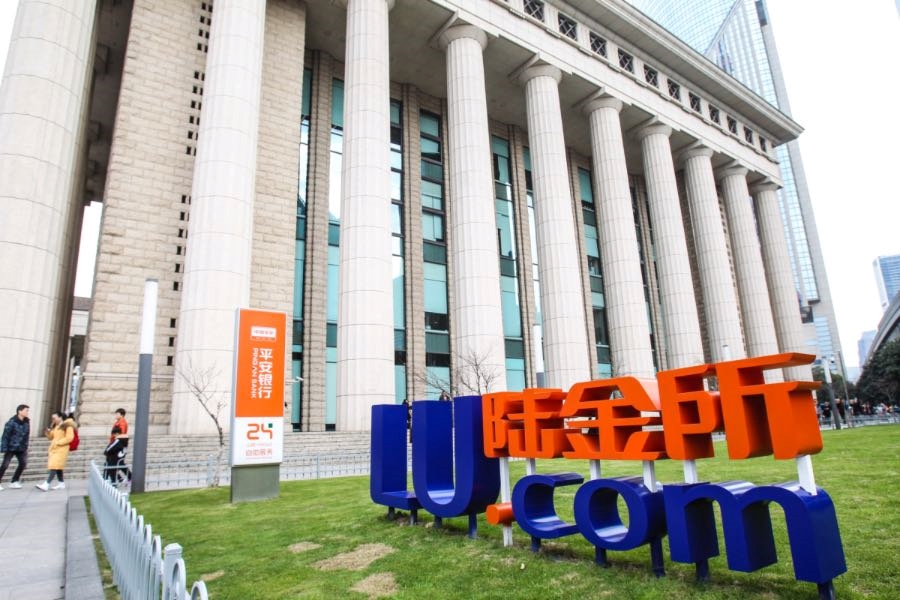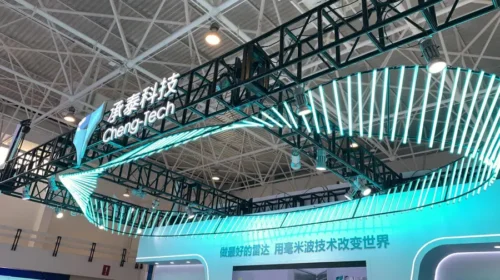Fintech Lufax Seeks Dual Listing as Pandemic Hits Profits

Ping An-backed Lufax has applied to have its shares traded in Hong Kong as well as the U.S., following in the footsteps of dual-listed fintech firms OneConnect and 360 DigiTech
Key Takeaways:
- Online loans facilitator Lufax posted a 31% drop in profits in the first nine months of last year and expects a loss in the last quarter as the pandemic hurt its small and micro clients
- To reduce risks, Lufax has scaled back lending activities using its own capital
By Ken Lo
In October 2020, two Chinese fintech stars were poised for blockbuster IPOs. Ant Group’s share sale was cancelled at the last minute, but its competitor managed to go public in New York as planned, just days before Chinese regulators launched a crackdown on online lenders.
Online loan facilitator Lufax Holding Ltd. (LU.US), a subsidiary of Ping An Insurance (2318.HK; 601318.SH), is now seeking to list shares in Hong Kong as well as the U.S. on a dual-primary basis, while an IPO by Ant Group, the financial arm of Alibaba Group (BABA.US; 9988.HK), is still pending.
Lufax is 41% owned by Ping An and draws on credit guarantees from the insurance group for loans to small businesses, which have struggled during the pandemic. Although regulatory action did not derail its U.S. listing, the finance platform still came under strict scrutiny along with other online finance firms over the past two years.
In January, the Chinese central bank confirmed that 14 major platform companies including Lufax, Ant Group and 360 DigiTech (QFIN.US;3660.HK) had completed a required restructuring process. Lufax wasted little time in filing on Feb 1. for a dual primary listing In Hong Kong by introduction, a process of placing already issued shares that does not raise any extra funds.
Lufax was the second-biggest provider of non-traditional financial services in China as of the middle of last year, with nearly 18% of the market for outstanding loans to small and micro businesses, according to a report cited in its preliminary prospectus. The top five players together held around 68% of the relatively concentrated market.
Its earnings have been buffeted by the Covid pandemic. Lufax reported revenues of 52 billion yuan ($7.67 billion) in 2020, rising to 61.8 billion yuan a year later and dipping to 45.8 billion yuan in the first nine months of last year. Profits came in at 12.3 billion yuan in 2020 and 16.7 billion yuan in 2021, while the first three quarters of last year saw a profit of 9.58 billion yuan. The nine-month revenue was 0.4% below the prior-year period, while profits fell nearly 31% as Covid flare-ups disrupted business across China. The company has predicted a net loss for the fourth quarter.
Pandemic problems
Small and micro businesses have always been a crucial engine for China’s economic growth. By the end of 2021, China had around 140 million such enterprises generating more than 60% of GDP. Meanwhile, Lufax had 6.6 million small and micro business customers by the end of last September, with their total credit standing at 63.65 billion yuan.
But growth was badly squeezed during the pandemic, when many small businesses could not operate remotely, instead relying on customers visiting their premises. Stringent pandemic controls took a heavy toll on business activities, curtailing firms’ willingness to borrow and their ability to service their debt. As a result, providing relief to these companies is a priority for the post-Covid recovery phase.
According to Lufax, 85% of new credit in the first nine months last year, excluding consumer finance, went to small and micro businesses. Profits came under pressure as more customers fell behind on payments, while losses from credit depreciation piled up and credit costs rose.
During the nine-month period, the company’s total additional lending fell a year-on-year 15.9% to 417.6 billion yuan. Small and micro businesses reported more defaults and credit impairment losses grew to 10.29 billion yuan, 150% higher than the year-earlier period and equivalent to 22.5% of revenue during the period.
To cut the risk exposure on its loan portfolio, Lufax made less of its own capital available for lending. But its business faces regulatory and policy uncertainty, as Chinese authorities seek to contain risks in the online microlending sector.
Lufax said in its prospectus it had suspended loan funding for three microlending subsidiaries since Chinese regulators issued a consultation paper last year on rules governing online microlending. It shut down its microloan operations in the southern city of Shenzhen and in Hunan province. It also moved to offline microlending at its operations in the western city of Chongqing.
Currently, Lufax works with commercial banks and trust funds under a co-financing model, with credit insurance from Ping An Property & Casualty Insurance and its subsidiary Ping An Puhui Enterprises Management on co-financed loans to meet the risk management requirements of its capital providers. Ping An Property & Casualty Insurance provided insurance or guarantees on around 71% of outstanding loans managed by Ping An Puhui by the end of last September. Data on business information website Tianyancha shows that Ping An Puhui has subsidiaries in 29 Chinese provinces and is a key source of credit enhancement for Lufax’s loans.
Facing policy risks
However, a central bank ruling in 2021 could hinder Ping An Puhui’s efforts to provide finance guarantees across provincial borders through a network of subsidiaries. The central bank said six types of financial institutions, including finance guarantee companies, should be regarded as local institutions, meaning that are not, in principle, allowed to carry out inter-provincial business. Firms operating across province borders would have to follow transition plans developed by financial regulators.
Lufax said it was unclear when the rules would take effect, and that finance guarantee companies could be required to obtain additional licenses or approvals.
In addition, companies that use data-sharing to investigate personal credit are legally required to obtain licenses. Therefore, Lufax and 360 DigiTech have been working hard to get certified. Lufax said regulations affecting the credit investigation sector are constantly evolving and are open to interpretation. If the business of enabling retail credit falls within the scope of credit investigation, the company would have to shift its business model, incurring costs that would hurt its finances.
Regulatory policies pose the biggest risk to Lufax, followed by exposure to the overall economy, as is the case with other financial platforms. With a current valuation of $6.5 billion and an optimistic estimate of zero profit for the fourth quarter, the company would have a price-to-earnings (P/E) ratio of 4.6 times, close to the 4.8 times of 360 DigiTech with a smaller but similarly structured portfolio. Once the stock makes its Hong Kong debut, the market will be looking to see if investors are willing to increase its value.
To subscribe to Bamboo Works weekly free newsletter, click here






